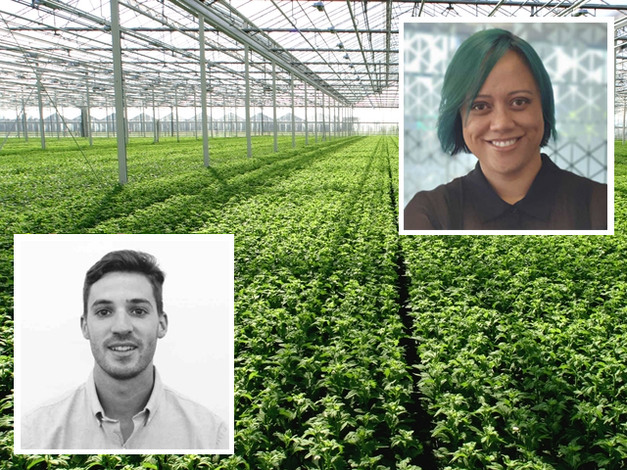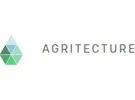“The implication that you are sustainable simply because you have a vertical-farm or a greenhouse is not going to be enough. You have to show some proof of your sustainability efforts,” says Ricky Stephens from Agritecture.
Together with Kylie Horomia of agritech company WayBeyond, they report the status of the CEA industry in their annual Global CEA Census Report. This year, the 2021 Census focuses specifically on sustainability and how farms are addressing factors such as water and energy consumption and general sustainable practices.
Click here for the complete report.
Future business
Kylie says that businesses must realize that sustainability is not just about getting rid of plastic or reducing your water usage, but also about business continuity. “It’s about setting your business up for the future, optimizing the use of utilities, water, and energy, but also how you treat your employees and succession planning.”
“You can’t manage what you don’t measure,” says Kylie. “Sustainability is not a new discussion, but it is gaining importance with governments and consumers around the world demanding more transparency and accountability.”
Ricky notes how the media often portrays CEA as one size fits all – a sustainable solution to feed the world. “You can’t just apply one definition, especially not when that definition is that CEA is more sustainable or productive. For some farms it is, for others it isn’t.”
As it turned out, there are big differences across the sector.

Fairly low median, higher average
“There’s a fairly low median, but a much higher average,” says Ricky, explaining that about a third or a quarter are performing up to 100 times worse than their colleagues. “It was amazing to see a pretty sizable portion that is not even close to their peers when it comes to performance.”
Is this spread related to the large number of newcomers to the industry? Does it not take time to achieve optimum sustainability? Maybe, explains Ricky.
“Even when segmenting by age of the business, the variability in results generally held. We found that 27% don’t track their sustainability metrics at all, and another 48% say they manually track their sustainability ‘every now and then’. So, one way to interpret this is that three-quarters of the industry do not regularly track sustainability outcomes. This could certainly be the main driver of the spread we saw in sustainability performance.”
Is it bad if the industry you work in has a sustainable image, even if it is not absolutely true? According to Kylie, exaggeration or ‘greenwashing’ doesn’t need to happen. “There are fantastic growers doing great things in the industry and when you look at the research out there, it’s clear that CEA outperforms similar field-grown produce in many sustainability metrics including water, land use, labor, and through to yield, but you can’t hang an entire industry off two or three sustainability stories from a few growers.”
90-95% water savings
The 90-95% water savings is a well-known and widespread number in the CEA industry, which is also often used by new companies or initiators of a project. Ricky tells how they dove into research and found out that 2/3rds of the CEA operators indeed use 90+% less water than conventional outdoor production. “However, there’s a third of farms that fall below that 90% water savings. Some of them are close to it, and 10% are significant outliers. Those numbers will eventually also reach governments and investors: the expectations are high, and they will want to receive proof of their investments. Just saying you’re a vertical farm or a greenhouse is not going to be enough. You’ll have to show some proof of specific sustainability outcomes.”
The same goes for energy usage, which is a pain point for vertical farms. “Just saying you are a vertical farm, and therefore sustainable, without sharing insights on your energy usage and sources will not be accepted anymore.”
Does this sound overwhelming? Do not worry – there are things to be done. Realization is always the first step. “Sit down with your team and map it out. See how you’re doing and where you could improve,” Kylie says. That is also where we can find the silver lining. “If you’re looking at ways to be more efficient with your energy, water, and other metrics, you’ll eventually save money as well. Sustainability is not a horrible word to smack companies around but a win-win situation: more operating cost savings and a better story from a consumer perspective.”
With these perspectives, Ricky and Kylie invite growers to look at their place on the scoreboard of sustainability. “If you do not know what success looks like and what to benchmark against, you cannot win,” Kylie is convinced. This is also something Ricky sees within Agritecture: the company consults many young CEA companies and even created a software platform, Agritecture Designer, to help them test the feasibility of urban farms and greenhouses.
Lead generator
Yet, as they both explain, the Census is not a lead generator for them but rather an invitation for the industry to step up. “We’re not in it for glory or the money, and in fact, it’s a cost to both companies; we simply believe in CEA and how it can support food production for the planet, so the Census report shares the growers’ insights and highlights potential trends across the sector,” says Kylie.
Ricky adds: “We know there are great stories out there, but what we read often in the media is the same story from 10 years ago: ‘are vertical farms the future of food?’ Yes, CEA is a key part of the future of food, but there’s so much more to talk about. It requires more stories, backed by evidence and data, on sustainable growers doing it right and sharing their knowledge to the wider community.”
Click here for the complete report.
For more information:
WayBeyond
www.waybeyond.io
 Agritecture
Agritecture
www.agritecture.com

